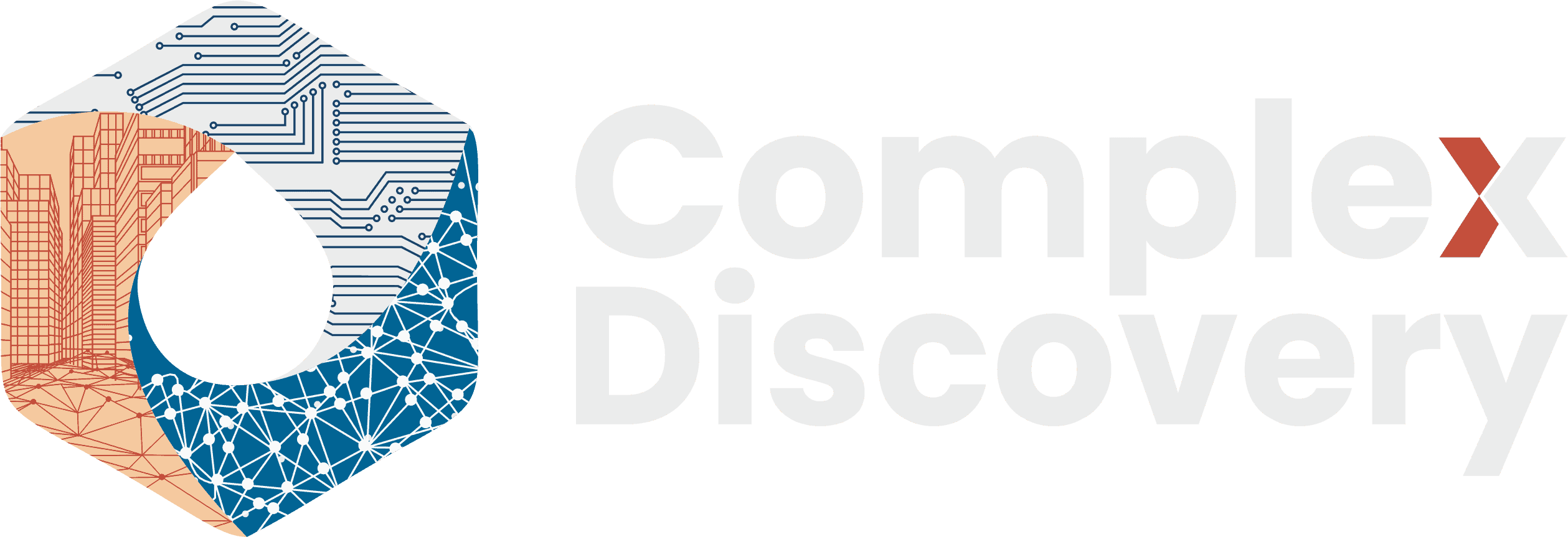Editor’s Note: Brand governance has outgrown its glossy PDF. As generative AI empowers employees across functions to craft external-facing content, the risks once confined to marketing now ripple across legal, security, and compliance domains. This article examines how Boards and C-Suites must reframe brand management—not as a creative exercise, but as an enterprise risk requiring cross-functional oversight. From deepfake impersonation to unauthorized AI-generated content, brand integrity is no longer a style guide—it’s a governance imperative. Cybersecurity, information governance, and eDiscovery professionals will find this shift deeply relevant as digital brand assets become a new frontier for risk exposure and regulatory scrutiny.
Content Assessment: From Brand Guidelines to Brand Guardrails: Leadership's New AI Responsibility
Information - 94%
Insight - 95%
Relevance - 94%
Objectivity - 94%
Authority - 95%
94%
Excellent
A short percentage-based assessment of the qualitative benefit expressed as a percentage of positive reception of the recent article from ComplexDiscovery OÜ titled, "From Brand Guidelines to Brand Guardrails: Leadership's New AI Responsibility."
Industry – Leadership Beat
From Brand Guidelines to Brand Guardrails: Leadership’s New AI Responsibility
ComplexDiscovery Staff
The Static File in a Dynamic World
The brand guidelines did not arrive as a book at the latest board meeting. They arrived as a digital file—a PDF tucked into a link inside the board portal, sitting alongside financial reports, risk dashboards, and strategy presentations. Few directors opened it before the meeting. Most had seen versions of it over the years, describing the company’s logo, colors, typography, and approved phrases in careful detail.
What captured their attention instead appeared in a sequence of slides deeper in the deck. One slide showed the official logo, exactly as the PDF specified. The next showed screenshots of social media posts, sales presentations, and partner one-pagers created across the business. The same logo appeared again, but sometimes it was compressed, sometimes the hue was slightly off, and sometimes the accompanying language carried a different tone than the one the PDF described.
The variations were minor, but the implication was not. The evidence on the screen suggested that the brand no longer existed solely in the digital file maintained by marketing. It had slipped into the everyday tools of employees across departments, into AI assistants embedded in productivity suites, and into the systems of partners and resellers. For a board charged with overseeing strategy and risk, the question shifted from how the brand should look to who controls its use.
The End of the Centralized Monopoly
For much of the last generation, the answer was simple. Brand lived under centralized management. Marketing teams, often working with agencies, controlled the design software, the production budgets, and the relationships with media and events. The brand PDF suited that model. It functioned as a reference for designers, copywriters, and a limited circle of internal stakeholders. Sales staff and geographical offices might request materials, but they rarely authored campaigns from scratch. Oversight stayed close to a single department.
That concentration gave boards comfort. Directors could view brand primarily through the lens of campaign performance and reputation surveys. Risk conversations tended to focus on public missteps in advertising, high-profile sponsorships, or major product launches. The assumption was that brand-bearing content moved through controlled pipelines and that most public-facing material had passed through professional hands aligned with the PDF’s instructions.
Generative AI and low-friction design tools have loosened that assumption. Employees across the organization now have access to systems that can create visually polished and tonally convincing content in minutes. A sales representative can paste a rough email into an AI-powered tool and ask for a sharper version “in the company’s voice.” A product manager can instruct a system to produce a launch announcement that feels consistent with past releases. A regional leader can generate localized messaging in multiple languages with a handful of prompts.
Brand as an Attack Surface
These activities are not confined to marketing platforms. They take place in office suites, collaboration tools, and web-based services that were not part of the original brand governance conversation. In many cases, the outputs look close enough to official material that customers, partners, and regulators see no distinction. The long-standing perception that “everyone thinks like a marketer” now meets an environment in which many employees actually have the power to act as one.
That power creates benefits and risks. On the opportunity side, distributed marketing can accelerate response times, enable local adaptation, and draw on the insight of staff who are closer to customers. On the exposure side, it can lead to inconsistent promises, unverifiable claims, and material created without proper review. When AI tools are involved, there is also the risk that internal information is entered into public systems or that synthetic content appears more authoritative than the underlying facts justify.
For boards and C-suites, this is no longer just a stylistic issue. It is a governance challenge that touches strategic direction, reputation, regulatory exposure, and operational resilience. Brand is an intangible asset, but it is also an attack surface and a vehicle for commitments. Directors are increasingly asking management who has authority to publish in the brand’s name, what systems can generate branded content, how those systems are governed, and how management detects and responds to misuse or impersonation.
Defining Brand Security
Addressing this challenge is where the concept of brand security guidelines is gaining ground. Unlike the traditional PDF, which concentrated on appearance and messaging, these guidelines extend into questions of access, authorization, technology, and process. The guidelines address which roles may originate external-facing material, what kind of AI tools are permitted for brand work, how reviewers from legal and compliance become involved, and how misuse is tracked and remediated. In some organizations, the guidelines describe how the company monitors for fraudulent websites, misleading partner materials, and AI-generated impersonation that uses the brand’s identity without permission.
Board accountability and C-suite responsibility sit at the center of this development. Brand security is no longer seen as a task that marketing can handle alone. The chief executive is expected to sponsor an approach that aligns brand activity with risk appetite and strategy. The chief marketing officer may steward the brand narrative, but the chief information security officer brings perspective on impersonation and digital threats. The general counsel considers advertising law, contractual obligations, and the enforcement of intellectual property rights. Technology leaders manage the AI platforms and integration points that now generate and distribute brand content. Operations, human resources, and compliance leaders contribute training, process, and culture.
A New Agenda for Governance
This collective responsibility must be visible at the board level. Directors are asking for regular reporting that connects brand incidents, AI usage, and content governance to broader risk metrics. Committees are examining whether existing charters capture this cross-functional oversight or whether new agenda items are needed to address AI-enabled marketing and brand security.
To govern effectively in this new era, leadership must pursue specific lines of inquiry. The Board must determine if current guidelines explicitly address AI-generated content created by employees outside of marketing. They must clarify who ultimately owns the “Brand Security” policy—whether it resides with Marketing, Legal, or Information Security—and ensure those silos are connected. Furthermore, they must verify that a protocol exists for responding to AI-driven brand impersonation, ensuring the organization can distinguish between a rogue marketing experiment and a malicious external threat.
Behind these discussions lies a quieter, technical layer that can carry significant consequences. AI-assisted brand work generates prompts, drafts, approval logs, and system records. These artifacts may later become relevant in investigations, contractual disputes, or regulatory reviews. Brand security guidelines that define how such material is stored, retained, or retired help establish predictable practice across the enterprise. They also help management explain to stakeholders how the organization distinguishes sanctioned communication from ad hoc experiments and how it manages that boundary.
As board members close their laptops and leave the meeting room, the original brand PDF remains where it has been for years, stored in the portal and referenced in onboarding materials. It still matters. It still describes how the company wishes to present itself to the world. But it no longer tells the whole story. The practical expression of the brand now runs through AI tools, distributed teams, and partner ecosystems that were never anticipated when the PDF was first saved.
The task facing boards and C-suites is to accept that change and to act on it. Brand is now an organizational function, not a confined marketing asset. It touches technology architecture, security posture, legal exposure, and day-to-day operations. Board accountability involves asking whether management has provided adequate guardrails for this new environment. C-suite responsibility involves designing and enforcing those guardrails so that creativity and speed do not come at the expense of trust.
Postscript: A New Mandate for Leadership
The shift from static brand guidelines to dynamic brand security changes the mandate for every leader at the table. It is no longer just a question of whether the logo is consistent; it is a question of whether the enterprise is vulnerable.
For the Chairman of the Board, this is now a fiduciary and governance issue comparable to cybersecurity. The Board’s duty of care extends to overseeing how the company controls its AI-enabled narrative. Directors can no longer be satisfied with “vanity metrics” like engagement or impressions; they must demand “risk metrics” that track unauthorized AI use, impersonation attempts, and content verification protocols. The Audit or Risk Committee must recognize that if they are blindly trusting that the brand is secure simply because it is popular, they are missing a material risk. The modern board agenda must move from asking “Is the brand strong?” to asking “Is the brand secure?”
The Chief Executive Officer must pivot from viewing brand as a delegated marketing task to treating it as a cross-functional liability. Because the risks of distributed content creation now include data privacy, regulatory fines, and deepfake impersonation, the responsibility lies as heavily with the legal and security functions as with Marketing. The CEO must stop viewing brand purely as creative output and start viewing it as critical infrastructure. The immediate test of this leadership is whether the CEO can mandate a joint approach where technical security, legal compliance, and brand identity are managed as a single, unified defense.
The Chief Revenue Officer operates at the front line of this transition. With business development and sales teams acting as the most aggressive adopters of generative tools, the “last mile” of the brand now lives in the thousands of emails, proposals, and pitch decks generated daily by the field. The CRO’s challenge is to redefine sales enablement: it is no longer just about equipping teams to sell faster, but about equipping them to sell safely. The CRO must ensure that the drive for efficiency does not lead to “shadow marketing,” where AI-assisted proposals make promises the company cannot keep or use language that violates the risk appetite.
The Chief Operating Officer faces the practical challenge of bridging the gap between governance and daily execution. Since the “distributed marketing” described in this article is actually happening within customer support units and geographical offices, the COO controls the workforce using these tools. Their mandate is to ensure that the drive for AI-fueled productivity does not outpace risk management. The COO must integrate brand security checks into standard operating procedures, ensuring that speed does not destroy the trust that operations rely on to function.
The Chief Legal Officer must confront the reality that the company’s intellectual property perimeter is dissolving. As employees generate assets using third-party AI models, questions of copyright ownership and contractual liability become increasingly complex. The CLO’s role is to define where the “human in the loop” is legally required to preserve asset protection and to ensure that the organization is not bound by hallucinated commitments made by unmonitored software.
The Chief Marketing Officer faces perhaps the most personal transformation. The days of acting as the “brand police”—drawing authority from a monopoly on design tools—are over. To succeed, the CMO must evolve into a “Brand CISO.” This transformation means trading the illusion of creative control for the reality of systemic governance. Since it is impossible to review every asset created by every employee with an AI assistant, the CMO’s new value lies in certifying the systems that generate that content and in building guardrails that allow the organization to move fast without losing the veracity of its voice.
Finally, the Chief Compliance Officer and Data Protection Officer must stand as the final gatekeepers of trust. Their shared burden is to manage the invisible flow of information. For the DPO, the critical risk is “input leakage”—ensuring that employees do not paste sensitive customer data or PII into public AI models to generate content. For the CCO, the focus is “output regulation”—ensuring that the speed of AI does not violate truth-in-advertising laws or industry standards. Together, they must enforce “AI Acceptable Use” policies that specify when a machine is permitted to speak on behalf of the company and what human verification is required before the “send” button is pressed.
A Note on Organizational Scale
It is important to recognize that no two organizational charts are identical. The distinct leadership roles outlined above represent critical functions, not necessarily specific headcount. In a lean startup or high-growth scale-up, a single founder or operations lead may wear the hats of the CMO, CRO, and Compliance Officer simultaneously. In a mature global enterprise, these responsibilities may be fractured across vast divisions and geographies.
However, the fundamental reality remains unchanged. Whether these considerations are managed informally over a messaging app or formally through a board audit committee, the risks are identical. The transition from the static Brand PDF to dynamic Brand Security is not a function of company size; it is a function of the digital age. Every organization, regardless of its hierarchy or maturity, must now solve for the governance of its voice in a distributed world.
News Sources
- When AI Content Creation Becomes a Legal Nightmare: The Hidden Risks Every Business Owner Must Know (Kelley Kronenberg)
- AI Governance for Board Members (Deloitte US)
- Tapping into the full power of CMOs (McKinsey)
- The rise of rogue content: The costs of “content chaos” and how to regain control (Axios)
- Google to CMOs at Slush 2025: Adapt to AI or Fall Behind (ComplexDiscovery)
Assisted by GAI and LLM Technologies
Additional Reading
- The Agentic State: A Global Framework for Secure and Accountable AI-Powered Government
- Cyberocracy and the Efficiency Paradox: Why Democratic Design is the Smartest AI Strategy for Government
- The European Union’s Strategic AI Shift: Fostering Sovereignty and Innovation
Source: ComplexDiscovery OÜ



























